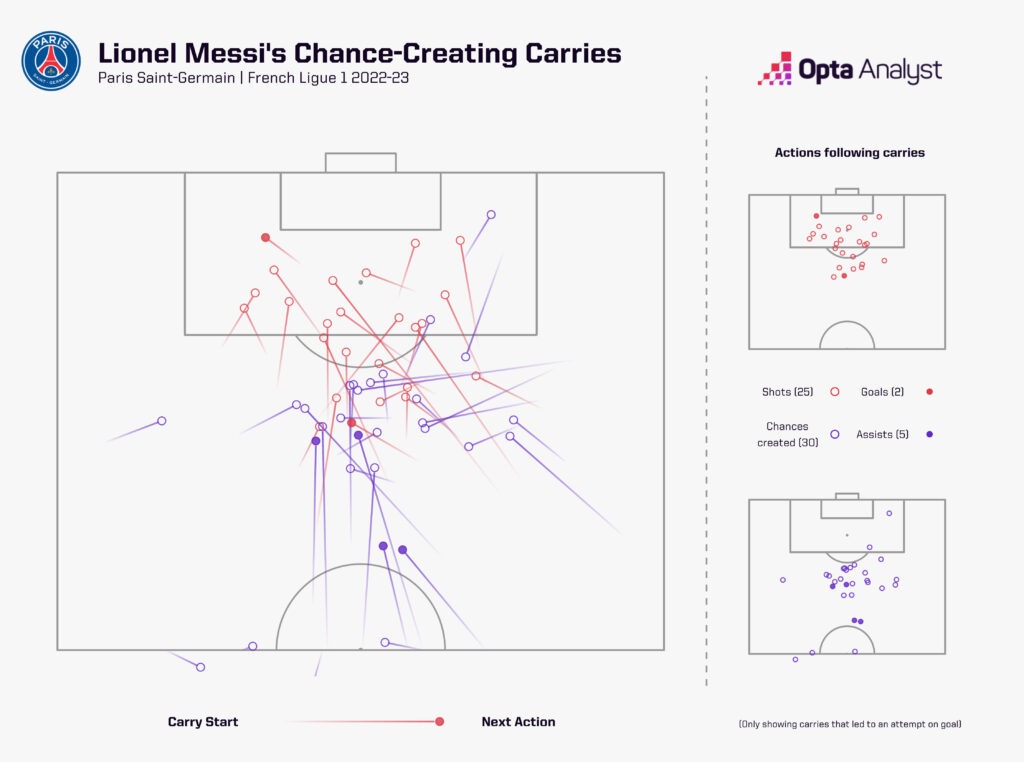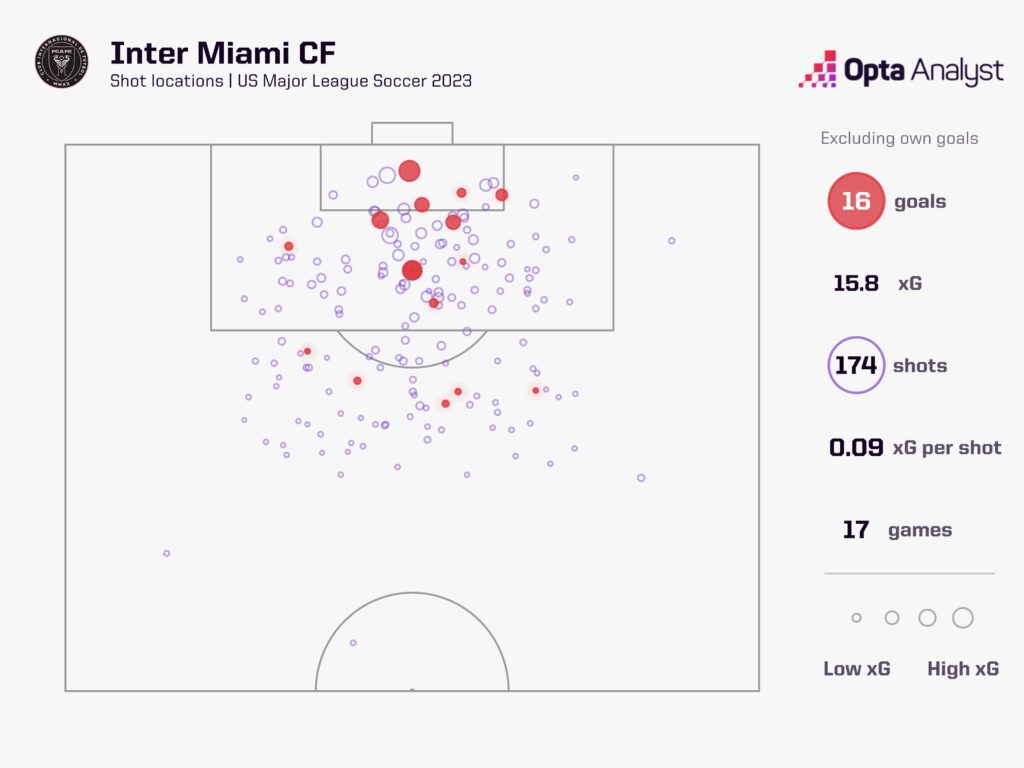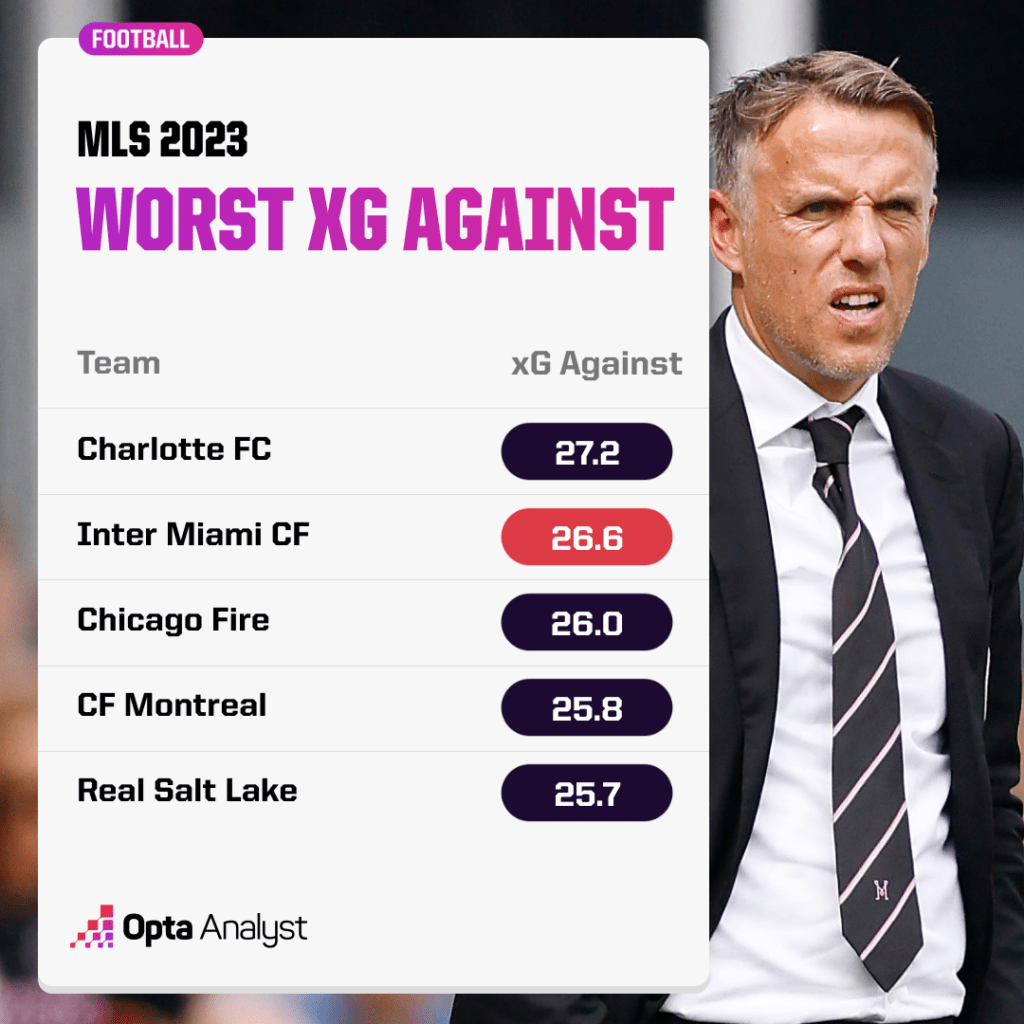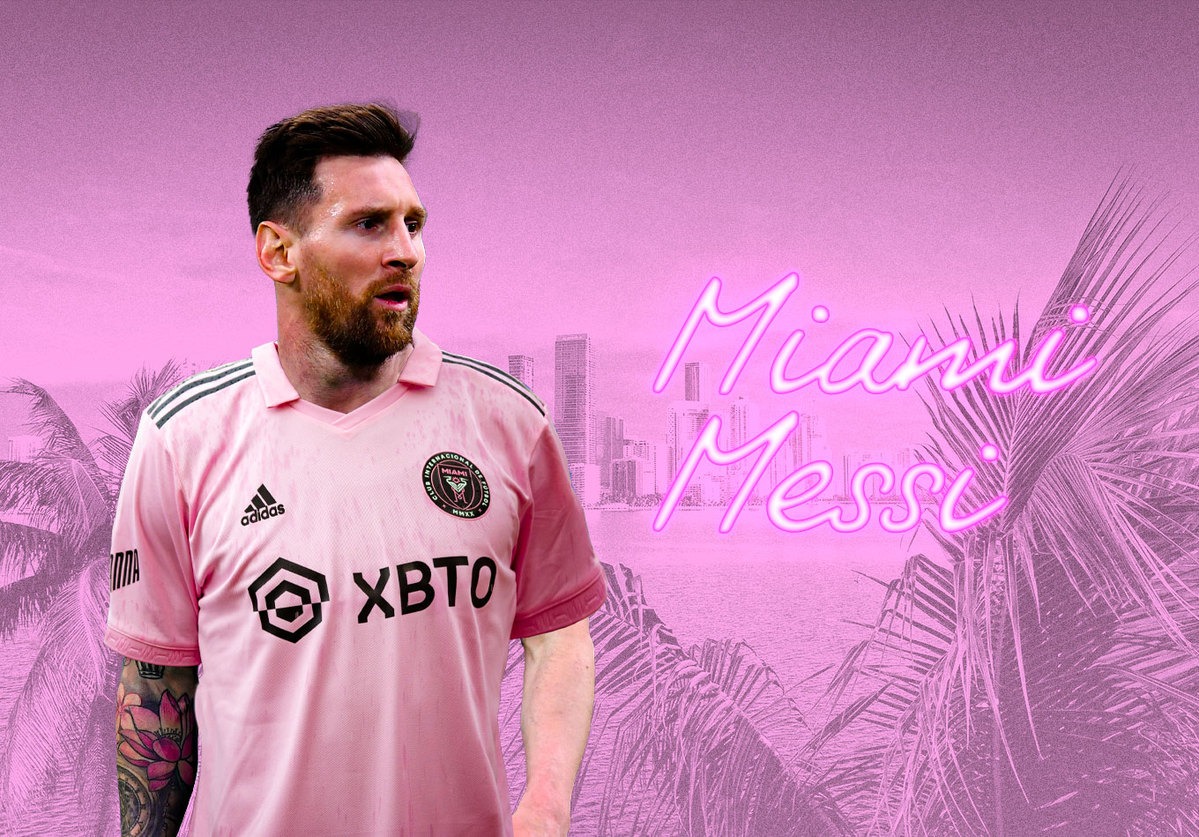Lionel Messi’s pending move to David Beckham’s Major League Soccer franchise, Inter Miami, has caught the headlines and the imagination of American sports. The effect this move could have on the game in North America off the pitch could be huge, especially if the league and the governing bodies make the most of it by extending the benefits of the arrival of this world star nationwide.
While this wider impact Messi has on soccer in the United States, and by extension Canada with its three MLS teams, will be judged over a longer period of time, the extent of the effect he has on the pitch for his team will be seen right away. Or at least that’s what Inter Miami hope. It is certainly what they need.
How will Messi fit in at his new club? What can Inter Miami do to make sure they get the best out of the league’s star player? How will he slot into the current tactical setup? The last question is perhaps the easiest to answer as this Inter Miami team don’t really have a recognisable identity, especially in attack. This is part of the reason, along with poor results and understandable supporter disappointment at those results, that Phil Neville was sacked at the beginning of the month. Choosing who replaces him will be the first key decision in determining whether Messi’s Miami mission will be a success.
The 2023 MLS regular season has now reached the halfway stage. Inter Miami currently sit at the bottom of the Eastern Conference having lost 12 of their 17 games. They rose briefly from their slump with three consecutive MLS wins at the end of April and beginning of May. With two wins in the US Open Cup during this run, albeit one on penalties, Neville’s team went on a five-game winning streak in all competitions. But an experiment with a back three in the Open Cup only worked in one MLS game before the defeats returned.
After a loss to Nashville SC in which the team lined up with a back three/five, Designated Player (DP) and striker Leonardo Campana said:
“I think the formation and the tactics that we used in the first half was not the correct one for the game. I think that’s from us, also from the staff. We spoke about that.”
It was a sign those within the team shared the fans’ frustration at the way things were panning out, and a belief that the tactics used weren’t getting the best from this team.
There can be a lethargy in the playing style if not in the effort of the players. Data shows that when Inter Miami are in a position to launch an attack, the team tends to take its time about it. They have the lowest number of “direct attacks” in the league this season, with 10. On the occasions they do counter-attack, these are not always carried out with urgency.
Though there is apparently a preference for some build-up play — Miami are in the top ten for build-up sequences involving 10 or more passes, with 176 — this team has only scored one “build-up goal” this season (a goal following a sequence involving at least 10 passes).
A difference-maker who can take multiple opposition players out of the game through both dribbling and passing will certainly help in this regard. Only Vinícius Júnior (112) made more successful dribbles than Messi (103) in Europe’s top five leagues last season, and only Bruno Fernandes (32) and Kevin De Bruyne (31) created more big chances for his teammates than him (29).
The possession play in general in Miami needs to be quicker and crisper, with better decision-making, which will need a number of players on the same page and a clearer tactical plan.

Inter Miami aren’t quite a possession-dominating team but neither are they a fully counter-attacking side, nor a high-pressing one. When they do press, they do it deeper in the midfield. There has been a focus on defending that has seen Miami, for all of their problems, concede fewer goals than teams higher up in the table, including fifth-placed Atlanta United and sixth-placed Columbus Crew.
But it is all a bit too safe and a bit too passive, and if expected goals are anything to go by, even a bit lucky. Only Charlotte FC have conceded more than Miami’s 26.6 xG against in MLS in 2023.
Meanwhile, at the other end of the field, only Chicago, Montreal, and Houston have created fewer chances than Inter Miami’s 121. Miami are also bottom of the entire league for expected goals with just 15.8 from 17 games.
It is clear there is plenty of work to do and Neville’s exit creates something of a blank canvas. Messi’s arrival, plus whoever is appointed as the new head coach, will play a big part in how it is filled.

Argentine Javi Morales used a 4-2-3-1 in his most recent of two MLS games as interim manager. In the first, defender Kamal Miller was sent off inside the opening ten minutes and they lost 2-1 to Wayne Rooney’s DC United, so it was difficult to take too much from that experience, but the 4-2-3-1 was used again in a US Open Cup win at Birmingham Legion.
Despite its league troubles, Miami have reached the semi-finals of that national cup competition, so in theory, Messi only needs to win two games to claim his first trophy and see his new team qualify for the CONCACAF Champions Cup — the region’s equivalent to the Champions League.
Teenagers Benjamin Cremaschi, David Ruíz and Noah Allen, plus 20-year-old Ian Fray, all started the second game of Morales’ interim spell, a 3-1 defeat against New England Revolution. Cremaschi and RuÍz especially have seen a good number of minutes throughout the season, so there is plenty of youth at Miami getting MLS experience, ready to support Messi.
Cremaschi is a highly-rated 18-year-old, born in Miami, but most recently called up for the youth team of the country of his parents’ birth, Argentina, having been called up to US youth teams in the past. His dad was a rugby union player who gained a handful of caps for Argentina in the 1990s, and his family are from the city of Mendoza in western Argentina. Messi’s arrival will be a big deal for them, and the young midfielder will be in dreamland playing for his hometown MLS club alongside one of his national team’s icons.
A recent injury to Jean Mota means Cremaschi should see plenty more playing time, and he’s already racked up over 900 first-team minutes this season. He could play in midfield behind Messi, working between midfield and attack, as at times within games he has popped up further forward in support of striker Josef Martínez.

Fitting Messi and other potential big-name signings into the squad will require some considerable roster management, something that hasn’t always been a strength at Miami. In 2021 the club was sanctioned by the league for breaking salary budget and roster guidelines in the 2020 season.
There has been speculation around the future of other DPs, Rodolfo Pizarro and Campana, as the club looks to create space in the salary budget and the DP slots. The DP slot currently occupied by standout defensive midfielder Gregore, currently injured and not scheduled to return until September, will be bought down with allocation money to create space for Messi. Around all of this rearranging, the homegrown players and others on the senior roster will be key to complementing Miami’s Messi revolution.
It just so happens that some of the other players who could play a role alongside Messi are also Argentine. The 28-year-old forward Nicolás Stefanelli has played from the left in recent games and could remain in this role with Messi likely playing from the right or centrally. Left-back Franco Negri has been one of the club’s better players this season and is second in the team for expected assists, behind Jean Mota, with 1.98, but despite this, rumours of a move for Jordi Alba persist.
Martínez not taking up a DP spot means he should remain. It is another sign Inter Miami has quality in its roster already and is certainly performing below its capabilities. Injuries haven’t helped, and Gregore’s absence especially will continue to hurt until his return around September, but there are early indications the club’s academy is producing some useful players.
This exuberance could be a vital part of integrating Messi into this team while also creating an identity, mixing stars with young prospects.
Regardless of the formation or the preferred style, which will primarily be determined by the choice of head coach to replace Neville, Inter Miami will need endurance, energy, and enterprise around its new star if the whole thing is to work. Messi will take care of the chance creation, the creativity, the wonder goals and the free-kicks, and is likely to solve many of Miami’s attacking problems.
Around that there needs to be a structure, transforming Miami from a team that appears to do a bit of everything at a below-average standard to one that is solid, recognisable, and looks like it has a plan beyond passing it to Messi and hoping for the best. Although at the end of the day, considering Messi’s prowess, if all else fails, that isn’t such a bad plan.
Enjoy this? Subscribe to our newsletter to receive five stories each Friday. It’s free. Also, follow us on Twitter.
